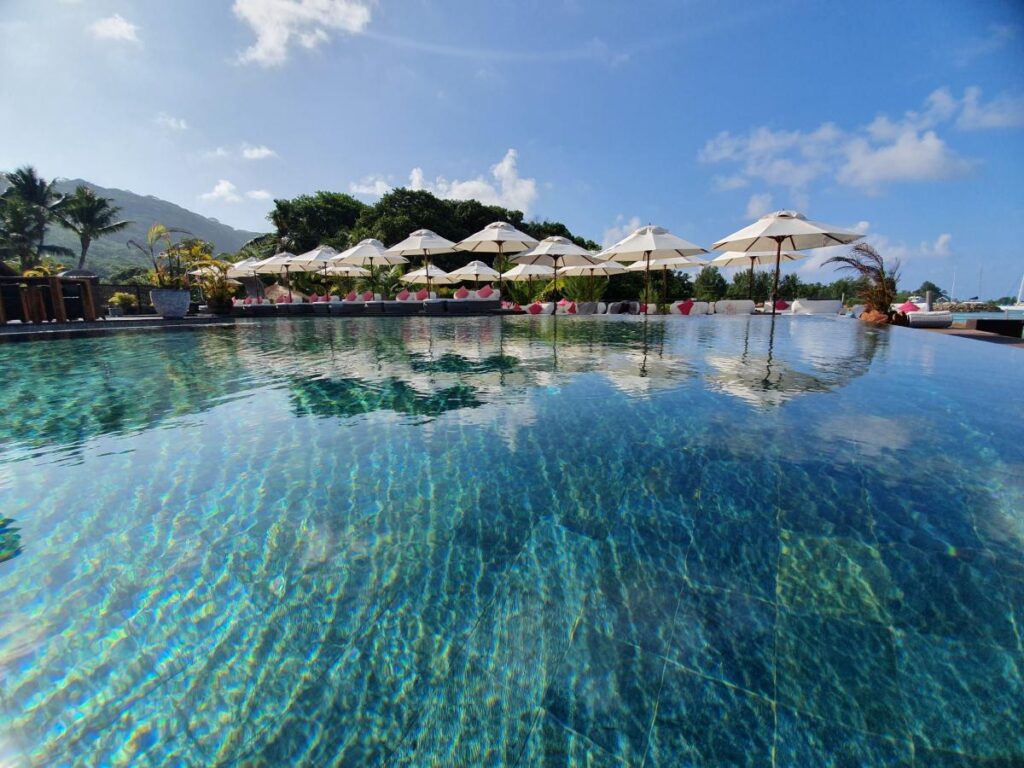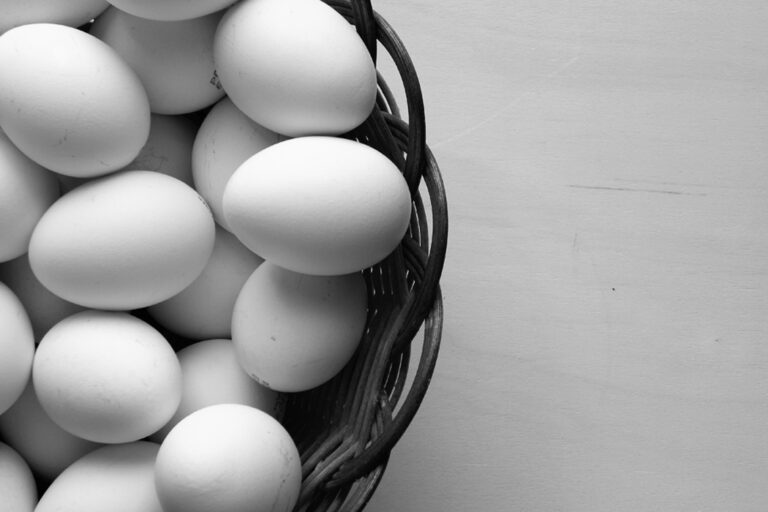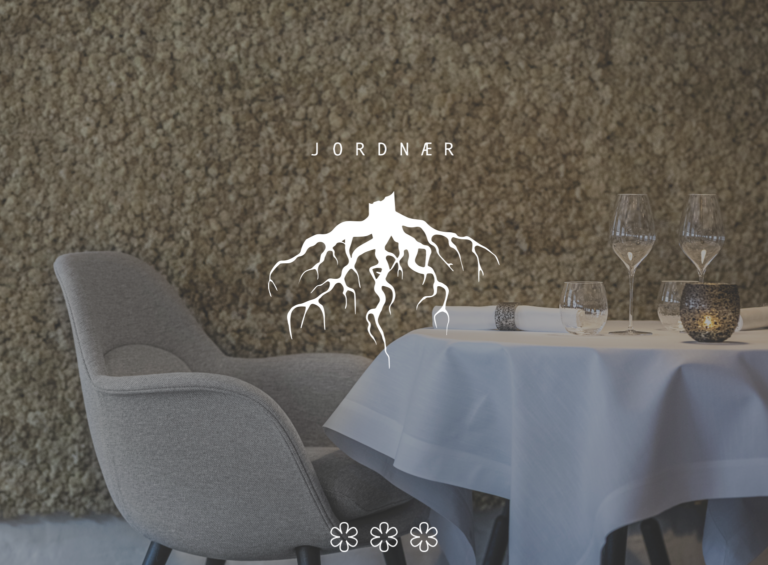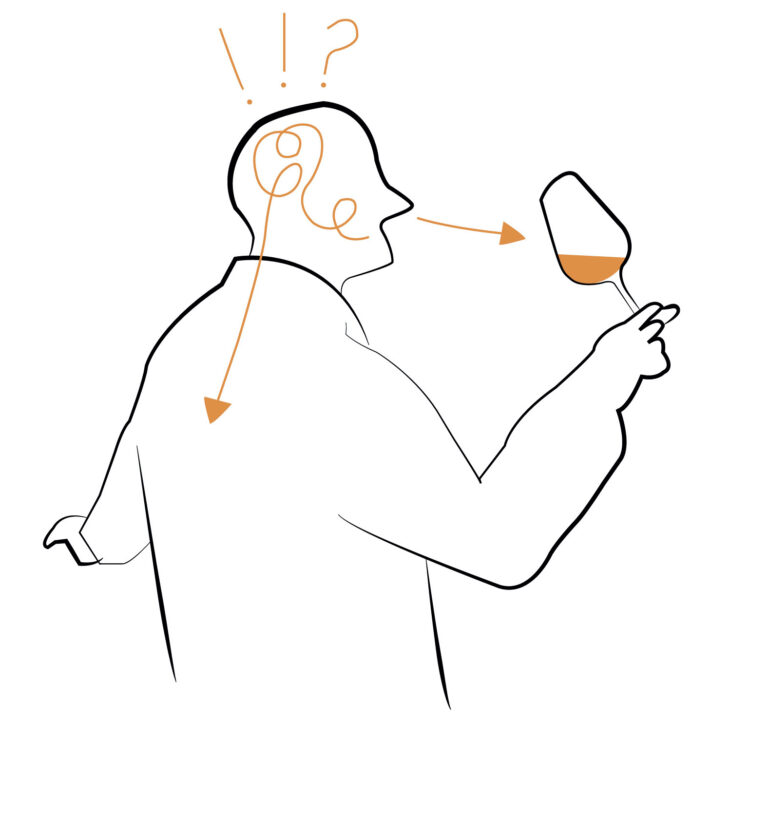Winter travel report från the Seychelles. Read Richard Juhlins story from the tropics.
It has become a wonderful tradition that I take my sons on a combined sun-warming training camp and champagne hiking trip arranged by the masterful tour operator Travel Beyond with the father on the sports holiday. That may sound a bit twisted, but in my own case it’s exactly right and when it comes to the sons, it’s mostly about training camp and swimming holiday with a bit of champagne training assisting his dear father.
Estimated reading time: 11 minutes


Last year we traveled to Constance Prestige Hotel and Atoll Moofushi in the Maldives (see article here). This year, the journey went a little straighter and a little further south on the other side of the equator to the fairytale world Seychelles. Recently returned, I met the football icon Jesper Blomqvist who has been to both destinations and he preferred, like surprisingly many, the Maldives over the Seychelles, but I go crazy instead of the latter destination. The population and service staff are certainly more smiling and professionally fast in their treatment in the Maldives and the turquoise color of the water is even more constant and lighter ATM blue than in the more color-changing water around the French-influenced archipelago. Otherwise, almost everything is better in the Seychelles, at least if you stay in one of the few luxury hotels. The biggest and oh so important difference is that nature is infinitely more varied than in the beautiful but uniform flat atoll landscape in the Maldives which actually does best from above or below sea level.

What is so unique about the Seychelles? Apart from the fact that this archipelago is an unusually secluded and beautiful place to stay, with ultra-clean air, lush lush primeval forests, imaginative granite cliffs, high mountains and beautiful coral beaches with a perfect climate, another reason is that you can find a beach here almost entirely self.
In this island kingdom that became independent as late as 1976 after being colonized by both the French and the English, there has been no ambition to make the beaches available for mass tourism as it is committed to preserving the Seychelles as an exclusive and unexploited gem. Each island has its own character, which makes this archipelago with its 115 islands an eminent place for “island hiking”. You do not have to be a biologist to be seduced by colorful and sometimes slightly approachable birds, exotic flowers and giant sea turtles. It is almost inconceivable that a tropical habitat that is so teeming with wildlife does not have a single animal that is dangerous to humans! Here you are safe. Both vipers, bears, wolves, wasps and above all ticks, you have to be careful not to be confronted with in our home areas, which at least I have always seen as so harmless from a global perspective. It is interesting to look back on my childhood when I thought I lived in the world’s most safe and secure neutral peacekeeping country. Then I had no idea that our three largest cities would become some of Europe’s most dangerous and densely populated places or that the proximity to the Russia or the Soviet Union they were called then, whose ice hockey I loved, could become a real threat. Times are undeniably changing.

We did not have time for an island hiking this time, but contented ourselves with staying and visiting the two most delicious islands, La Digue and Praslin. The more ordinary main island of Mahé with the sleepy capital Victoria you have to pass whether you want to or not because the international planes land there before you go a little sleepy on to the paradise islands with a wobbly propeller plane or a slightly more stable boat.
We began our adventure on La Digue, Seychelles’ most paradisiacal gem with fabulous beaches lined with round granite blocks and divine greenery. Le Domaine de l’Orangeraie is the island’s only true luxury accommodation and offers 63 villas just 700 meters from the stunning Anse Severe beach where most of our sprint sessions in the chalk-white sand took place. The giant villas are nestled in the lush tropical garden, and some also have large decks, private pool, jacuzzi and endless views of the sea and the neighboring island of Praslin.
La Domaine de l’Orangeraie also has an elegant pool area and stylish restaurants that do not quite live up to the class I expected. The food was good with a Creole focus, but hardly something to write home about. In addition, the wine list was probably with the exception of for the Burj Al Arab in Dubai and the Ritz-Carlton in Hong Kong, the most expensive I have seen during my travels around the world.

No, the real treasure of the island was the grandiose nature of the island. Whether we were running, cycling or sliding forward in a golf cart, every corner of the virtually car-free five-kilometer-long island was irresistibly inviting and hilly. The geology is fascinatingly varied and the change between volcanic soil, granite and sandstone is due to the islands both arising from volcanic eruptions and sitting together with Africa and hearing and be amazed Australia. You switch between 300 meter high rainforest mountains with ancient giant ferns, vines, monsters, acacia trees and palm trees to pass the next moment homely houses in magnificent colors in which the 2,000 residents live their quiet lives.

Most famous, however, is La Digue for being lined with the world’s most beautiful and unique tropical beaches. Some are barren and windy with giant waves that only the most experienced surfers can meet. Others look like a bounty commercial or a James Bond beach in Jamaica where Ursula Andress can get out of the water at any time singing on “Underneath the Mango tree…” each other.

Most unreal is the only pay beach Anse Source d’Argent that you see in the video (in this link). Unfortunately, you can not be alone there as today it is the world’s most photographed advertising beach. But I’ll not complain, I could not help but film and crack a lovely bottle of 2012 Larmandier-Bernier ‘Vieille Vigne du Levant’ before sunset. The last glasses I drank unbelievably in my loneliness with the waves clucking around my feet and wondering for a moment if I was in Nirvana. I soon became aware that I did not when our cool golf cart driver Joe took us to the deserted southeast side of the island where the only sign of human life we saw was a giant yacht hidden a few hundred meters from the beach. A little googling later, we realized that we located Nord, one of the world’s largest private boats owned by Russia’s richest man who, like many other wealthy Russians, sought refuge in the Seychelles and Maldives to avoid having his beloved toys seized in this horrible and absurd time so emotionally orchestrated of the unrealistic despot Putin.

Satisfied with impressions and adventurous natural spectacles, we looked forward to taking it a little calmer and just landing in enjoying the sun, swimming, exercise, a good book and champagne-inspired gastronomic experiences in one place. On Praslin, the second largest of the Seychelles’ islands, lies one of the world’s most acclaimed beach paradises, Raffles Seychelles. It is a well known fact that Raffles in Singapore where Singapore Sling was created is one of the world’s most famous hotels. Sir Stamford Raffles opened this colonial-style hotel in 1887 and today the hotel is a national monument where I personally sipped the famous drink and drank a some Dom Pérignon with Joe Labero after one of his magical performances in the hotel.

Raffles are found today in several parts of the world where Dubai, the Maldives and especially the Seychelles attract life-lovers from all over the world to enjoy perfection and unbeatable service-related luxury. As relatively newly opened, Raffles Seychelles has quickly established itself as the premier hotel on the island known as the Garden of Eden. We agreed that only Phulay Bay Ritz-Carlton‘s masterful resort in Krabi can compete among what we have experienced in terms of exclusive tropical luxury. The list of awards and rankings that confirm Raffles and Praslin’s paradise beaches as world leaders is hugely impressive. Raffles Seychelles consists of 86 luxurious villas spread over an expansive poetically beautiful landscape with views of the sea and the unexploited island of Curieuse. It was so wonderfully nice where we lived that it was tempting to just stay in our villa and cool off in our own pool, but since the beauty of Anse Takamaka beach was priceless and the 60 meter pool was probably the most luxurious we bathed in, we often ended up where when we were not training at the gym, got massage of the most sensitive fingers Bali created in the most relaxing outdoor environment imaginable or reveled in wonderful food from all corners of the earth.

The breakfast was perhaps the best and would undoubtedly have received 3 Guide Michelin stars if there had been a breakfast guide. The Asian Curieuse Restaurant and the gourmet restaurant Losean both held high class, but were still just below star level. There were plenty of stars in the sky, however, and the wine list here was several classes better and more reasonably priced than at La Domaine de l’Orangeraie.

It is so unbelievably wonderful for us northerners to sit down outside in the middle of winter caressed by the warmest winds, 28 degrees, tropical night sounds with flying dogs in twilight to fruit trees and with exercise-weary bodies replenish energy stores with spicy food and local ingredients that are rinsed down with a chilled Felton Road ‘Chardonnay Block 2’. So laughing ridiculous unlike the reality we have in our gray ice siglo much of the year.
As the champagne expert I am, I usually looked for perfect places and moments for the seven hiking champagnes I brought from home. Unlike the Maldives where all champagnes were stuffed in the Muslim customs, they slipped through unnoticed and were in perfect condition in the overcrowded ice bucket so important at these latitudes, which effectively stops the biggest problem for a champagne connoisseur in the Seychelles, namely the heat. However, the humidity was lower than in most tropical destinations and with a clean and light sea breeze without tones of seaweed in 27-28 degrees, I was impressed by how good the champagnes smelled and tasted. The difference between Thailand, Barbados, Hawaii, Queensland, Singapore, Mauritius and even the Maldives last year was striking. This makes me suspect that the minimal weather variations on paper are more important than I could have imagined. So a different period than just when we were there might have been able to provide less successful champagne experiences.
One conclusion, however, is that 27 degrees with 60% humidity gives a huge difference in experience compared to 30 degrees and 90% humidity. In general, it was also a successful move that we brought with us strongly Chardonnay-dominated wines. Low dosage was also an advantage in the climate as well as low age. Most surprising was therefore that in 2005 Louise Pommery, both with age and a considerable amount of pinot noir, emerged as the trip’s greatest hiking experience in the paradise environment of La Digue. As a whole, I can only warmly recommend the Seychelles as a wonderful place for Champagne Hiking and if the book had been made today, Anse source d´Argent would definitely have become one of the earth’s 100 selected places.





